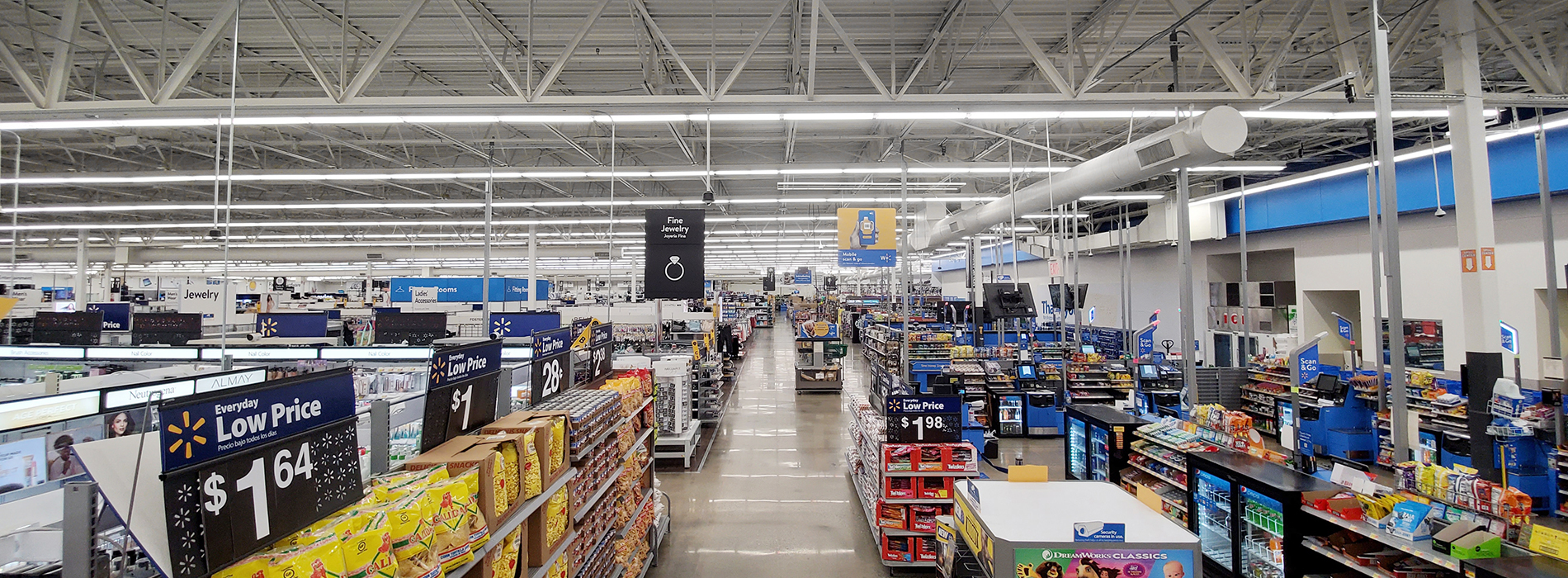
Energy efficiency projects can yield significant impacts – especially for large companies – by reducing building energy use and lowering utility bills. Plus, they lessen demand on the grid and help curb greenhouse gas emissions from fossil-fuel energy production.
To achieve the deep greenhouse gas emissions reductions needed to avoid catastrophic impacts from climate change, the commercial building industry will need to take bold action. One key strategy includes installing holistic energy efficiency technology packages that go beyond single-measure retrofits and leverage emerging, pre-commercial products to achieve the largest potential savings.
However, predicting the technical and financial performance of such energy efficiency technology packages is complicated. That is the key inquiry behind the Big-Box Efficiency Project, an effort led by the Center for Sustainable Energy (CSE) to test an integrated, networked suite of pre-commercial energy-saving technologies in a real-world environment: a Walmart Supercenter in Southern California.
The primary goal is to reduce the store’s electricity use by at least 20%. By modeling and testing an integrated suite of technologies, the project team aims to create a blueprint for big-box retail across California – and the nation – to achieve deep energy savings and demonstrate the transformational potential of rethinking how we pursue energy retrofits in existing buildings.
Why target energy use in buildings
Commercial and residential buildings accounted for about 29% of total U.S. end-use energy consumption in 2020 and 40% of total energy consumption (including electrical system losses). In recognition of this, California set a goal of doubling statewide electric and gas end-use savings by 2030 (SB 350).
Walmart, the world’s largest retailer, has set a goal of achieving zero emissions across the company’s global operations by 2040. The company has already decreased building energy use through traditional energy efficiency upgrades, such as LED lighting retrofits and HVAC upgrades, as well as by adding solar and energy storage in some locations.
In support of its zero emissions goal, Walmart is always looking to unlock deeper energy savings in its stores and the Big-Box Efficiency Project is another way to test and learn.
Evaluating new technologies
The demonstration project is designed to help validate the savings potential of pre-commercial technologies and unlock additional savings through an integrated approach. The project is evaluating the benefits of combining:
- DC-capable LED lighting. i2Systems’ next-gen DC-ready LED lighting is highly efficient, bright and DC-capable, meaning it’s ready to directly integrate with energy storage systems in the future, avoiding energy conversion losses.
- Smart motors for refrigeration and HVAC. Turntide’s Smart Motor System only uses electricity when it is needed to perform useful work instead of constantly drawing electricity like conventional motors.
- Pre-cooling for air conditioning. Integrated Comfort Inc.’s DualCool® system reduces electricity needed by HVAC equipment to create cold air by pre-cooling outside air using water and evaporation.
- Smart water management. Saya Life Inc.’s Smart Water Management System will monitor the water consumption of the DualCool technology to evaluate estimated gallons of water used per kWh saved. The system optimizes water usage to reduce waste and increase system reliability.
- Internet of Things (IoT) building energy management systems platform. Locbit’s IoT platform will combine data from the four technologies above, as well as utility data, submetering data, and other data streams, and analyze the data to identify faults, run diagnostics, as well as identify potential additional energy savings opportunities.
Building a path forward
The five-year project concludes in 2022. The lessons learned could also be replicated and deployed in other buildings with similar end-use and system characteristics.
Led by CSE, the Big-Box Efficiency project is funded by the California Energy Commission (Grant EPC-17-008), in partnership with Walmart, Southern California Edison and project partner contributions. In addition to the technology partners listed above, other project partners include the National Renewable Energy Laboratory (energy modeling), TRC Engineers Inc. (general contractor), P2S Inc. (design), DAVEnergy Solutions (commissioning) and Emily Grene (installation contractor).
To learn more
Visit the Big-Box Efficiency Project website to sign-up for email updates and download published project reports.
Attending the Greenbuild International Conference & Expo? Check out the project team’s presentation, Findings from the Big-Box Efficiency Project, on Thursday, September 23, or on demand. Learn more.


